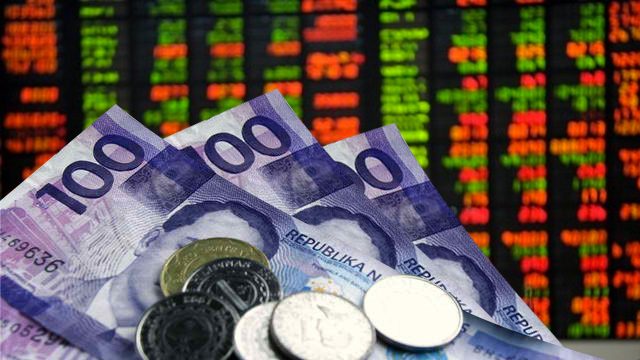SUMMARY
This is AI generated summarization, which may have errors. For context, always refer to the full article.

Manila, Philippines – The country’s balance of trade, and not high-profile political developments, is behind the peso’s dramatic slide in recent weeks, according to a risk consultant.
On Tuesday, February 21, the Philippine peso depreciated to P50.25 against the US dollar – its weakest performance in a decade. Weighed down by concerns of rate hikes in the US, political uncertainty in Europe, and optimism ahead of America’s tax plan, Tuesday’s close was the weakest since the P50.32:$1 level recorded on September 26, 2006.
“There’s a differentiation being made now [between emerging nations] and I think it’s on the current account. Some countries such as Thailand have good current account balances and therefore they are perceived as being able to weather risks down the road,” said Bob Herrera-Lim, managing director at economic think tank Teneo Strategy, in a Rappler Talk interview on Wednesday, February 22.
These risks include the US Federal Reserve raising rates or another external shock similar to the Brexit crisis.
“These countries are perceived as being better able to withstand these shocks. The Philippines, whether for different reasons such as stagnant semiconductor export growth or a sense that foreign exchange remittances might be declining, is seen as not as robust as these countries,” Herrera-Lim explained.
“Right now, if you’re talking about the last 2 or 3 weeks, it’s more of the current account technicals that [foreign investors] are looking at. We’re not seeing any political noise to justify it. You always have political noise in the Philippines but I don’t think it’s the most urgent driver for how we’ve seen the currency move in the last couple of weeks,” he added.
Growth and vulnerability
An indicator of economic health, a government’s current account is the sum of the balance of trade goods and services exports less imports, net income from abroad, and net current transfers.
A current account surplus means that a country is a net lender to the rest of the world, while a deficit means that the country is paying more for services and goods from abroad and is thus a net borrower globally.
For the Philippines, in particular, a big boost to current accounts is remittances from overseas Filipino workers (OFWs), which have exceeded expectations.
“How robust your current account is a rough measure of vulnerability. [A shrinking current account surplus] can be because of growth but if there is a shock, the country may be able to withstand it less,” Herrera-Lim said.
The country’s economy maintained its stellar performance last year, with the gross domestic product (GDP) growth coming in at 6.8%, but has since seen its current account surplus dwindle.
According to the Bangko Sentral ng Pilipinas (BSP), the country’s current account was still running at a surplus of 0.6% of GDP from January to September 2016, although it narrowed significantly from a surplus of 2.4% of GDP for the same period in 2015.
In its latest quarterly economic update, HSBC forecasted the Philippines’ current account surplus to narrow from 2.6% of GDP (P7.7 billion) for the full-year 2015 to 1.3% of GDP or P3.8 billion in 2016, driven by weak exports for the majority of the year.
“It’s like a bank – when the economy is growing, then it lends a lot of money. People will say, ‘Okay, that’s fine.’ But what if the economy goes down and people suddenly stop paying their loans? Then the banks who don’t have as big a cushion of capital are seen as more possibly being more vulnerable,” Herrera-Lim explained.
The risk consultant also doesn’t think the market would be a target for speculators anytime soon, as the Philippines doesn’t have any “outsized liabilities” and the market will eventually correct itself.
“With a weaker currency, eventually if things work out people will start buying less of imported goods and firms might scale back on capital expenditures, especially importation of machinery, and then you have more exports. Eventually that’s the purpose of the peso weakening, it restores equilibrium,” Herrera-Lim said.
“At the end of the day, as long as we run good policies, help our sectors grow, and our industries become more competitive, and the peso is managed well… then people will say the economy will improve.”
Not the determining factor
While Herrera-Lim did concede that political developments had an impact on investors’ perception – notably the Philippines’ drug war, US protectionism, and falling oil prices that affected OFWs in the Middle East – he pointed out that most of these risks are long-term.
The risk consultant also stressed that these were not the determining factors in the peso’s recent slide.
“The politics affects the perception of vulnerability but at the end of the day, it’s not going to change overnight… but how these things – whether it’s tax reform, constitutional change, or attacks against the President – will all affect investors in the future,” he said.
“If the President has a high level of political support, no matter how you criticize him, even if it’s noisy criticism and grabs the headlines; the sense will be that at the end of the day, he’ll still be President Duterte and he’ll still do the things he wants to do, controversial as it may be, and we’ll still go this way,” he added.
“What really matters in terms of perception is how tax reform proceeds, infrastructure developments proceed, and our ability to sustain growth in certain industries like the BPOs.” – Rappler.com
Add a comment
How does this make you feel?
There are no comments yet. Add your comment to start the conversation.